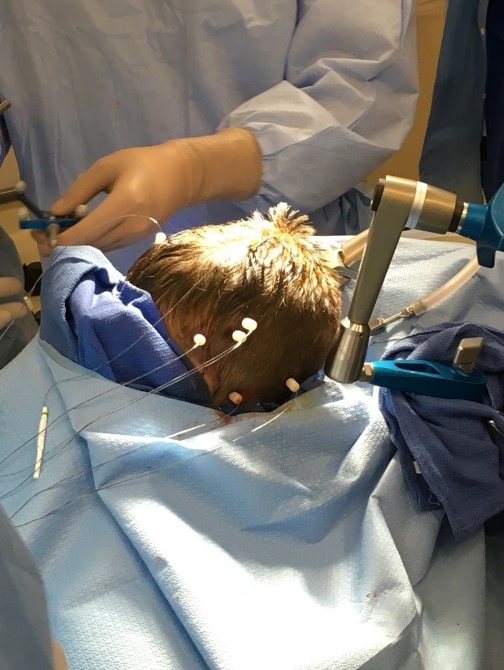What’s a Stereo-Electroencephalography (SEEG) Procedure?
An epilepsy treatment plan can take you down many paths. Here are a few things to be prepared for if your doctor recommends a SEEG procedure.
An epilepsy treatment plan can take you down many paths. Here are a few things to be prepared for if your doctor recommends a SEEG procedure.
The Stereo-Electroencephalography (SEEG) procedure is a method of intracranial electrical monitoring that consists of inserting multiple long, thin electrodes into the brain through small holes in the skull. These electrodes have multiple contacts along their length, each providing an independent recording of electrical activity.
The SEEG procedure does not require a piece of the skull to be removed and, as a minimally invasive procedure, may cause less postoperative pain and discomfort than a strips and grids approach.1 After the placement of the electrodes in a surgical procedure, the patient will be transported to an epilepsy monitoring unit for video and electrical monitoring until they have one, or several, seizures. It’s important to know that an SEEG procedure may also result in headache, fatigue, restrictions on activity, and a period of time spent in the ICU after the procedure.
According to one study, patients that underwent a strips and grids procedure were significantly more prone to complications than those with the SEEG procedure.2 In an international survey of centers performing epilepsy surgery in children, SEEG had a 1.8% complication rate, compared to a 5.9% complication rate for subdural strips and grids.3

ROSA One® Brain is a surgical positioning and guidance system that allows for accurate4, fast5, and minimally invasive placement of neurosurgical instruments. ROSA One Brain is used extensively in neurosurgical programs throughout the United States for the placement of SEEG electrodes.
Before the procedure, your surgeon and epileptologist will work together to plan where to put electrodes in your brain based on your pre-operative workup. This plan is saved on the robot’s computer until the day of your surgery. During the surgery, the robot guides the surgeon to the exact locations specified in the plan, where they will insert the electrodes for monitoring.
SEEG electrode placement with ROSA One Brain has all the advantages of a minimally invasive SEEG procedure, combined with the speed, reliability, and accuracy of a robotic assistant.4,5 A comprehensive study of SEEG procedures performed with ROSA One Brain found an average time savings of 3 hours and 42 minutes when compared to traditional SEEG.5 Often, ROSA One Brain procedures can even be performed without shaving the patient’s hair.

Content reviewed for accuracy by Dr. Jiyeoun Yoo, MD, FAES, FACNS